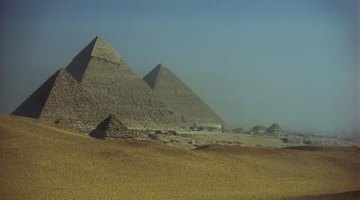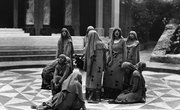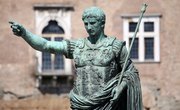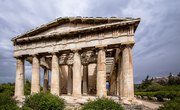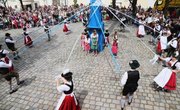The ancient Egyptians may not have had college football or the NBA, but sports were nonetheless an important part of their culture. Egyptian leaders and statesman were among the biggest fans of athletic competitions, providing the funding and equipment for the events. The roots of many modern sports, like gymnastics and handball, can be traced back to ancient Egypt, where their rules were originally established.
Flips and Flexibility
The ancient Egyptians were among the first to practice gymnastics as both a recreational activity and professional sport. While acrobats were frequent entertainers in the royal courts, gymnastics was also a popular way to increase personal physical fitness. One painting dating back to 2,000 B.C. shows an Egyptian engaged in a body flexibility maneuver similar to the floor exercises of modern-day yoga and Pilates. Another painting shows a group of athletes performing vaults, making complete flips in the air and landing upright at the end of the move. Today's gymnasts still practice this convention of solid, well-postured landings.
Framing a Future Pastime
In 2007, Italian archeologists unearthed a large room equipped with a primitive alley and two stone bowling balls of different sizes. While this early game was undoubtedly a precursor to modern bowling, its rules were slightly different. Two players rolled the balls at the same time with different purposes; the holder of the smaller ball attempted to roll it into a hole at the end of the lane, while the player with the larger ball tried to knock it off course. The team who scored the most small balls into the hole was declared the winner.
The History of Handball
Drawings on the 5,000-year-old tombs of Saqqara, Egypt, of four girls throwing balls toward each other reveal handball's beginnings. People played the game on two teams by throwing light, leather balls stuffed with straw and plants back and forth between them at the same time. While standing on two feet to throw and receive the ball was one option, more creative moves were also allowed; players often climbed on each others' shoulders or backs to receive the balls. The sport remains popular in the country to this day through the Egyptian Handball Federation.
The Original Duck Dynasty
Ancient Egypt was one of the first societies to see hunting emerge as a recreational activity. "Egypt Throughout the Ages" at the MIT website describes how the Egyptian desert was home to a fruitful assortment of animals, from gazelle, ostriches and sheep, which were hunted for food, to lions and leopards, which supplied skins for clothing. Participants usually traveled in groups on horses, using bows and arrows as weapons. Hunting often became an addictive pursuit, even for rulers. One monarch, Ptolemy Epiphanes, disappeared for days at a time on hunting trips instead of serving his people.
Related Articles
References
Writer Bio
Kori Morgan holds a Bachelor of Arts in professional writing and a Master of Fine Arts in creative writing and has been crafting online and print educational materials since 2006. She taught creative writing and composition at West Virginia University and the University of Akron and her fiction, poetry and essays have appeared in numerous literary journals.

